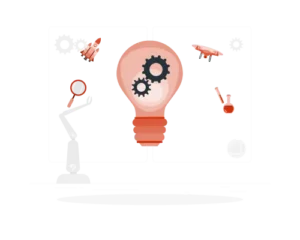Two terms that are buzzing and dominating discussions among business leaders are AI and Automation. However, these terms are sometimes used interchangeably, causing confusion. Understanding the key differences and similarities is crucial for business leaders to decide which to implement and where to use them.
This blog aims to clarify these concepts by exploring what AI and automation are, how they differ, what makes them similar, and where they can be applied.
Table of Contents
- What is Automation?
- What is Artificial Intelligence?
- Key Differences Between AI and Automation
- Similarities Between AI and Automation
- AI and Automation Examples
What is Automation?
Automation is a technology that carries out tasks and processes with minimal human intervention. The primary goal of automation is to increase efficiency, accuracy, and productivity while reducing human error and labor costs.
Types of Automation
Automation can be categorized into several types based on its complexity and application:
1.Robotic Process Automation (RPA):
Involves the use of software robots or “bots” that are designed to execute repetitive and routine tasks within various business processes. These bots are programmed to handle tasks that would otherwise require human intervention, thereby increasing efficiency and reducing the chance of human error.
Examples of tasks that can be automated by these bots include data entry, where bots can input large volumes of data into systems quickly and accurately; invoice processing, where they can handle the validation and recording of invoices with minimal supervision; and customer support, where bots can interact with customers through chat or email to provide immediate assistance and resolve common issues.

2. Fixed Automation (Hard Automation):
This type of automation is predominantly utilized in mass production environments where large volumes of products are manufactured.
It involves specialized equipment meticulously designed to perform specific tasks repetitively and efficiently.
These systems are typically inflexible and are best suited for processes that require high precision and consistency.
Examples include assembly lines in automotive manufacturing, where each station is dedicated to a particular task, such as welding, painting, or assembly, ensuring that the production process is streamlined and efficient.

3. Programmable Automation:
This type of automation is particularly suitable for batch production, where a series of identical items are produced one after the other.
The equipment used in programmable automation can be reprogrammed to perform a variety of different tasks, allowing for flexibility and adaptability in manufacturing processes.
Some common examples of programmable automation include Computer Numerical Control (CNC) machines, which can be programmed to cut or shape materials with high precision, and industrial robots, which are capable of performing tasks such as welding, assembling, and painting with great accuracy and consistency.
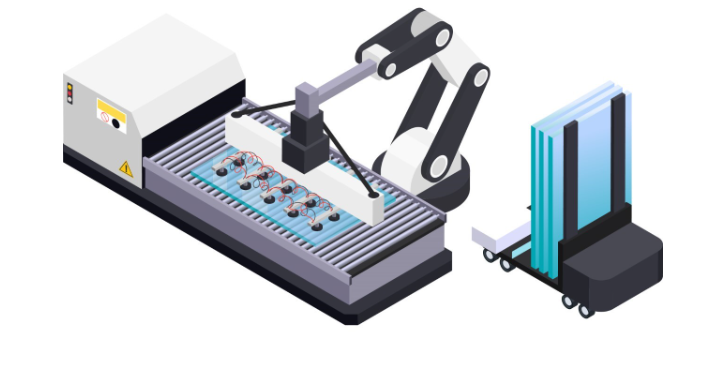
4. Flexible Automation:
This type of automation provides the ability to produce a wide variety of products without the need for extensive and time-consuming changeover processes. This flexibility is crucial in industries where product variety and customization are key competitive factors.
Examples of flexible automation include robotic arms and machinery that can be rapidly reprogrammed to perform different tasks as needed. For instance, a robotic arm in a manufacturing plant might be used for assembling parts in the morning and packaging products in the afternoon, all by simply updating its programming. This adaptability not only increases efficiency but also reduces downtime and operational costs.
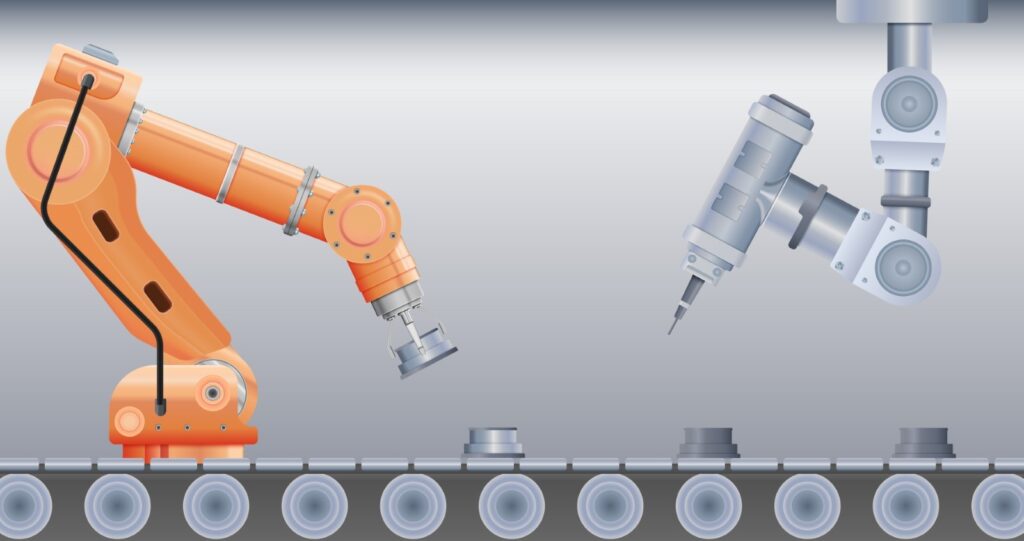
Benefits of Automation
- Increased Productivity: Automation enables faster production and reduces the time required to complete tasks.
- Consistency and Accuracy: Automated systems are less prone to errors, ensuring high-quality outputs.
- Cost Savings: By reducing the need for human intervention, automation can lower operational costs.
- Scalability: Automated processes can easily be scaled to meet increasing demand.
Automation is widely used across various industries, including manufacturing, healthcare, finance, and logistics. However, it’s important to note that while automation excels at repetitive tasks, it lacks the ability to learn or make decisions beyond its programmed instructions.
What is Artificial Intelligence?
Artificial Intelligence (AI) is a branch of computer science focused on creating machines and systems capable of performing tasks that typically require human intelligence. These tasks include problem-solving, learning, reasoning, perception, and natural language understanding.
Types of Artificial Intelligence
AI can be classified into several categories based on its capabilities:
1. Narrow AI (Weak AI):
This type of AI is designed to perform specific tasks with high efficiency and accuracy, focusing on a narrow set of functions rather than a broad range of capabilities.
It lacks general intelligence, meaning it cannot perform tasks outside its defined scope or adapt to new situations without human intervention, making it highly specialized.
Examples of Narrow AI include voice assistants like Siri, which help users with setting reminders, answering questions, and providing directions. Another example is recommendation algorithms that suggest products or content based on user preferences, assisting in creating a personalized experience for users. Additionally, image recognition systems used in security applications help in identifying individuals, while those in social media platforms assist in tagging photos and organizing visual content.
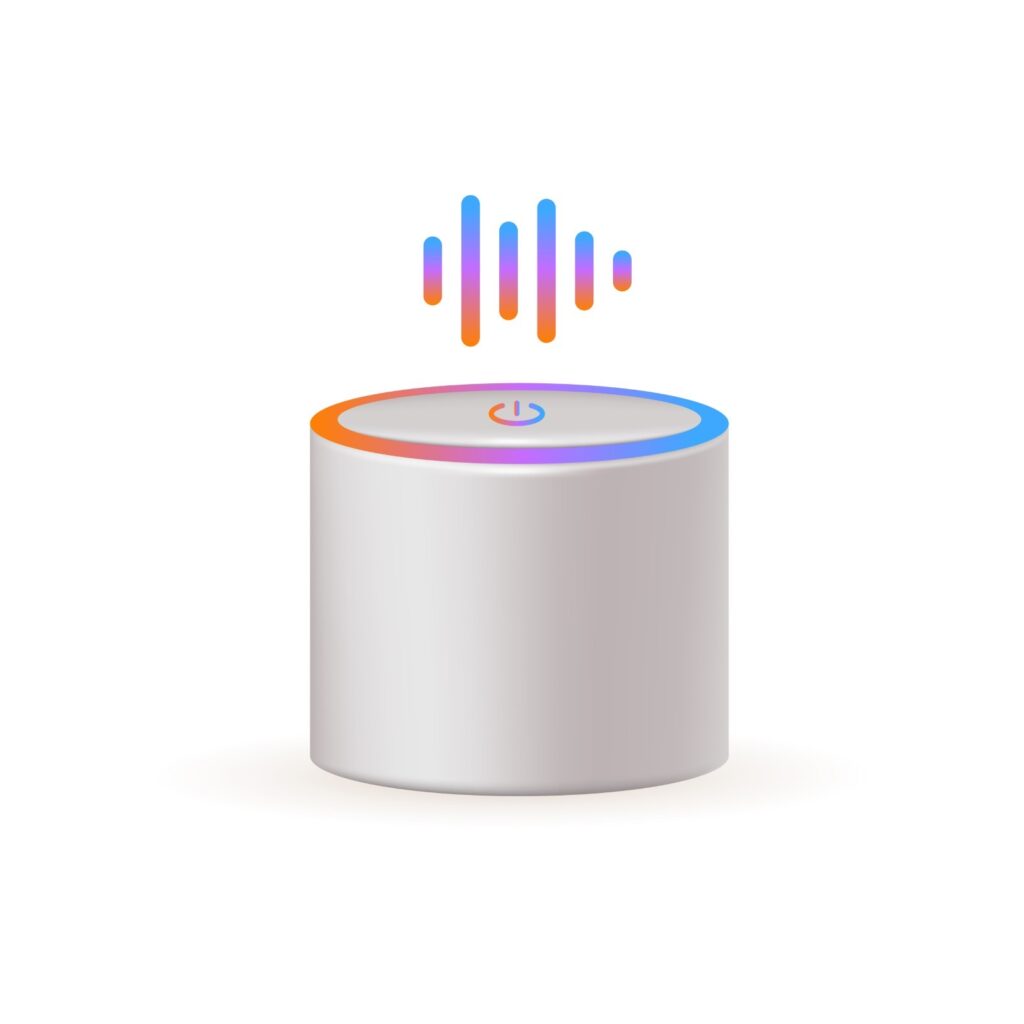
2. General AI (Strong AI):
Possesses the ability to understand, learn, and apply knowledge across a wide range of tasks. This includes the capacity to analyze complex situations, adapt to new information, and solve problems in various domains.
Can perform any intellectual task that a human can, demonstrating flexibility and competence in areas such as reasoning, decision-making, and language processing. This ability includes a broad spectrum of cognitive tasks typically associated with human intelligence.
Currently, general AI is a work in progress and a subject of ongoing research. Scientists and researchers are continuously exploring new methodologies, algorithms, and technologies to achieve this level of artificial intelligence. Technologies like generative AI, supercomputers, and quantum hardware can be used as a groundwork of general AI.
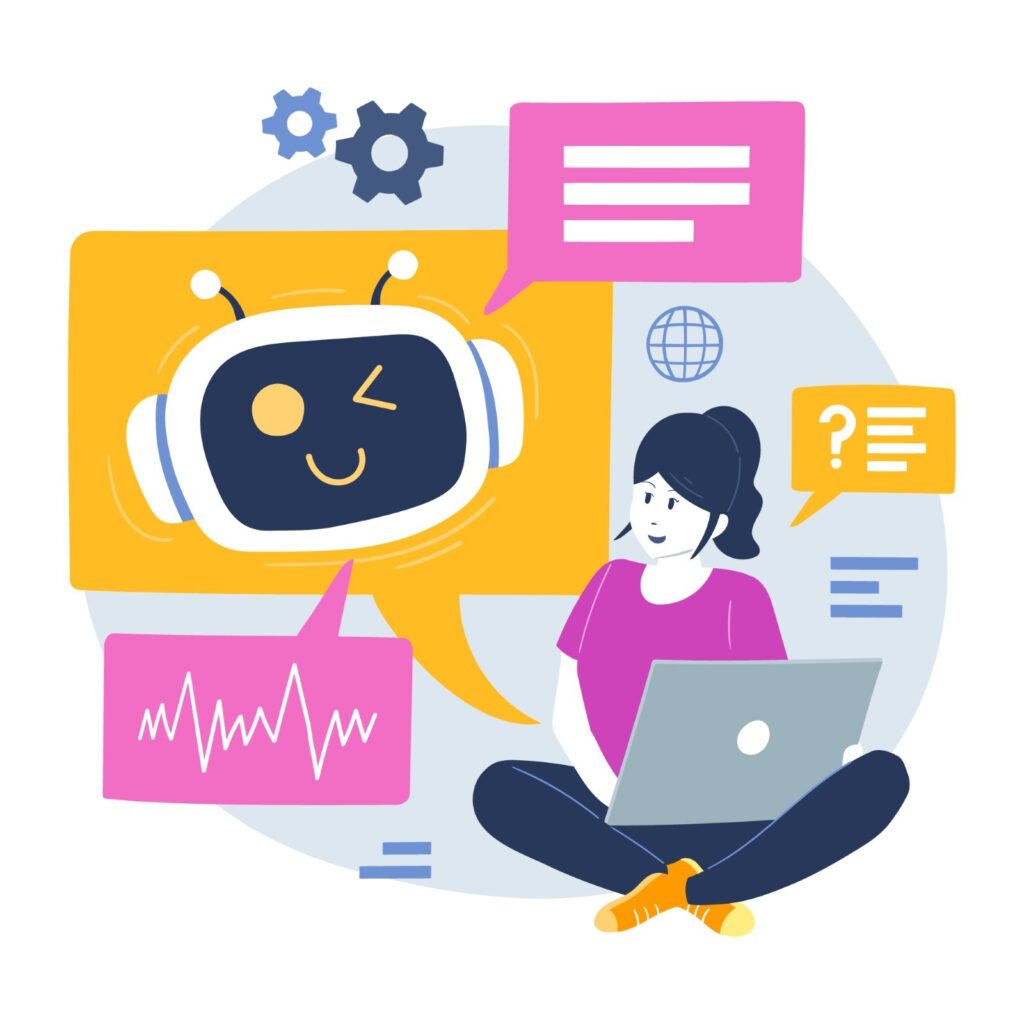
3. Superintelligent AI:
Hypothetical AI that surpasses human intelligence in all aspects, including creativity, problem-solving, and emotional intelligence. Such an AI would not only be able to perform tasks faster and more accurately but also think in ways that are currently unimaginable to humans. It could revolutionize industries, solve complex global issues, and even develop new forms of art and music.
Such AI type is also what fuels the media trope of “AI will replace humans.”
This concept remains speculative and is often explored in science fiction. Many authors and filmmakers have delved into the possibilities and ethical implications of such advanced AI, creating scenarios that range from utopian to dystopian. While some experts believe that achieving this level of AI is possible in the distant future, others argue that it may remain purely within the realm of imagination.
“Artificial superintelligence will become by far the most capable forms of intelligence on earth,” said Dave Rogenmoser, CEO of AI writing company Jasper."

AI Techniques and Approaches
- Machine Learning (ML):
A subset of artificial intelligence (AI) primarily focused on the development of algorithms and statistical models that empower systems to learn from vast amounts of data and make informed predictions or decisions based on that data. This field, known as machine learning, is a cornerstone of modern AI and is widely used in various applications.
Examples of machine learning applications include spam filters, which automatically detect and filter out unwanted emails; fraud detection systems, which identify and prevent fraudulent activities in financial transactions; and personalized recommendation systems, which suggest products, services, or content to users based on their preferences and behavior.
- Deep Learning:
A subset of machine learning, known as deep learning, utilizes neural networks with numerous layers (referred to as deep neural networks) to process and analyze vast amounts of data. This advanced method enables systems to make more informed and accurate decisions based on the complex patterns and relationships identified within the data.
Examples of deep learning applications include autonomous vehicles, which rely on these technologies to navigate and make driving decisions, and advanced image and speech recognition systems, which can identify objects, faces, and spoken words with a high degree of accuracy.
- Natural Language Processing (NLP):
Enables machines to understand, interpret, and respond to human language. This involves complex algorithms and models that allow computers to process and analyze large amounts of natural language data, making it possible for them to comprehend and generate human language with increasing accuracy and fluency.
Examples include chatbots, which can simulate human conversation and provide customer service or support; language translation services, such as Google Translate, which can translate text or speech from one language to another; and sentiment analysis tools, which can assess the emotional tone of a piece of text, such as determining whether a customer review is positive, negative, or neutral.
- Computer Vision:
Enables machines to interpret, analyze, and understand visual information from the world around them, facilitating a deeper interaction between technology and the physical environment.
Examples: This includes advanced technologies such as facial recognition systems that identify individuals based on their facial features, medical image analysis that assists doctors in diagnosing diseases through detailed imaging, and self-driving cars that navigate using real-time visual data to ensure safe and efficient travel.
Benefits of Artificial Intelligence
- Enhanced Decision-Making: AI systems can analyze vast amounts of data and provide insights that inform decision-making.
- Automation of Complex Tasks: AI can handle tasks that involve complex decision-making, such as medical diagnosis or financial forecasting.
- Continuous Improvement: AI systems can learn from new data, improving their performance over time.
- Personalization: AI enables the creation of personalized experiences, such as customized marketing or product recommendations.
AI is rapidly transforming industries, from healthcare and finance to retail and entertainment, by enabling systems to perform tasks that were once thought to require human intelligence.
Key Differences Between AI and Automation
While AI and automation are often mentioned together, they are fundamentally different technologies with distinct characteristics and applications. Understanding these differences is key to leveraging them effectively.
1. Nature of Tasks:
- Automation: Automation is designed to perform specific, repetitive tasks with high precision. It follows a set of predefined rules and does not require learning or adaptation. Once programmed, automation executes the same task consistently.
- AI: AI, on the other hand, can handle complex tasks requiring decision-making, learning, and adaptation. AI systems can improve their performance over time as they are exposed to more data.
2. Flexibility:
- Automation: Automation systems are rigid and inflexible. They are designed to perform a specific task, and changing that task requires reprogramming or reconfiguring the system.
- AI: AI systems are inherently flexible. They can adapt to new tasks without needing to be explicitly reprogrammed. For example, an AI system trained to recognize images of cats can be retrained to recognize images of dogs with additional data.
3. Human Involvement:
- Automation: Automation often involves minimal human intervention once the system is set up. Human involvement is typically limited to monitoring and maintenance.
- AI: AI may still require human input, especially during the training phase or when interpreting complex results. However, AI systems can often operate autonomously once deployed.
4. Decision-Making:
- Automation: Automation follows predefined rules and cannot make decisions beyond those rules. It lacks the ability to reason or make judgments.
- AI: AI is capable of making decisions based on data analysis. It can weigh multiple factors, learn from outcomes, and adjust its decisions accordingly.
5. Scope of Application:
- Automation: Automation is best suited for tasks that are repetitive, well-defined, and require high precision. Examples include assembly line work, data entry, and routine customer service tasks.
- AI: AI excels in areas that involve large amounts of data, complex decision-making, pattern recognition, and learning. Examples include personalized marketing, medical diagnosis, and autonomous vehicles.
6. Development and Implementation:
- Automation: Implementing automation typically involves setting up hardware and software systems, programming them for specific tasks, and ensuring they run smoothly.
- AI: Developing AI systems requires data collection, model training, and continuous refinement. AI systems are often more complex to develop and deploy compared to traditional automation.
Aspect | Automation | Artificial Intelligence (AI) |
Nature of Tasks | Performs specific, repetitive tasks based on predefined rules | Handles complex tasks that require learning, decision-making, and adaptation |
Flexibility | Rigid and inflexible; designed for specific tasks | Flexible; can adapt to new tasks without explicit reprogramming |
Human Involvement | Minimal human intervention; mainly in setup and maintenance | May require human input during training and when interpreting complex results |
Decision-Making | Follows predefined rules; lacks decision-making capabilities | Capable of making decisions based on data analysis and learning |
Scope of Application | Best for repetitive, well-defined tasks requiring precision | Excels in tasks involving large data sets, pattern recognition, and complex decision-making |
Development and Implementation | Involves setting up hardware and software with specific programming | Requires data collection, model training, and continuous refinement |
Scalability | Can be scaled to handle more tasks | Can process larger datasets and handle more complex problems as it evolves |
These differences highlight that while both AI and automation can significantly enhance productivity and efficiency, they are best suited for different types of tasks and challenges.
Similarities Between AI and Automation
Despite their differences, AI and automation share some common ground, particularly in how they are applied to enhance business operations and industrial processes.
1. Efficiency and Productivity:
Both AI and automation are designed to increase efficiency and productivity. By automating tasks, whether through simple rule-based automation or intelligent AI-driven processes, businesses can achieve more with less time and effort.
2. Cost Reduction:
Implementing AI and automation can lead to significant cost savings. Automation reduces labor costs by minimizing the need for human intervention, while AI can optimize processes, reduce waste, and improve decision-making, leading to lower operational costs.
3. Consistency:
Both technologies offer consistency in performance. Automation ensures tasks are completed the same way every time, reducing variability and errors. AI can also provide consistent results, especially in tasks like data analysis and pattern recognition.
4. Scalability:
AI and automation systems can be scaled to meet increasing demands. Automation systems can be expanded to handle more tasks, while AI systems can process larger datasets and more complex problems as they evolve.
5. Enhanced Decision-Making:
While AI is more directly associated with decision-making, automation can also contribute by providing accurate, reliable data that informs decisions. For example, automated data collection systems can feed into AI models that generate insights.
6. Industry Applications:
Both AI and automation are applied across a wide range of industries, from manufacturing and logistics to finance and healthcare. Their combined use can lead to more efficient operations and innovative solutions.
AI and Automation Examples
To better understand how AI and automation are applied in real-world scenarios, let’s explore some examples across different industries.
1. Manufacturing:
- Automation: Robotic arms are widely used in manufacturing to perform tasks such as welding, painting, and assembly. These robots follow precise instructions and can operate continuously without fatigue.
- AI: In manufacturing, AI is used for predictive maintenance. By analyzing data from sensors on equipment, AI algorithms can predict when a machine is likely to fail, allowing for timely maintenance and reducing downtime.
2. Healthcare:
- Automation: Automated systems in healthcare include tools like robotic surgery systems, which allow for precise surgical procedures with minimal human intervention.
- AI: AI is revolutionizing healthcare through applications like medical imaging analysis. AI algorithms can analyze X-rays, MRIs, and other medical images to detect anomalies and assist in diagnosis with high accuracy.
3. Finance:
- Automation: Banks use Robotic Process Automation (RPA) to handle tasks such as processing loan applications, verifying customer information, and managing transactions.
- AI: AI in finance is used for fraud detection. Machine learning algorithms analyze transaction data to identify patterns indicative of fraudulent activity, enabling banks to act swiftly.
4. Retail:
- Automation: Self-checkout kiosks are a common automation tool in retail, allowing customers to scan and pay for items without the need for a cashier.
- AI: Retailers use AI for personalized marketing. By analyzing customer data, AI can recommend products, tailor promotions, and improve customer engagement, leading to increased sales.
5. Transportation:
- Automation: Automated systems like cruise control and anti-lock braking systems (ABS) have been standard in vehicles for years, enhancing driving safety and convenience.
- AI: The development of autonomous vehicles relies heavily on AI. These vehicles use deep learning, computer vision, and sensor fusion to navigate and make decisions on the road without human input.
6. Customer Service:
- Automation: Many companies use automated systems to handle routine customer inquiries through phone menus or chatbots that provide predefined responses.
- AI: AI-powered chatbots take customer service a step further by understanding natural language, interpreting complex queries, and providing more personalized and accurate responses.
7. Logistics:
- Automation: Automated sorting systems in warehouses streamline the process of organizing and dispatching packages, improving the efficiency of order fulfillment.
- AI: AI optimizes logistics through route planning algorithms that consider traffic, weather, and other variables to determine the most efficient delivery routes.
These examples illustrate how AI and automation are not just theoretical concepts but practical tools that drive innovation and efficiency across various sectors.
Conclusion
AI and automation are both transformative technologies that are reshaping industries and redefining the future of work. While they share some similarities, particularly in their ability to enhance efficiency and reduce costs, they are fundamentally different in their capabilities and applications. Automation is best suited for repetitive, rule-based tasks that require consistency and precision, whereas AI excels in complex, data-driven tasks that require learning and decision-making.
Understanding the differences between AI and automation is essential for businesses looking to implement these technologies effectively. By leveraging the strengths of both, companies can not only streamline their operations but also drive innovation and stay competitive in an increasingly digital world.
Whether through robotic process automation in finance, AI-driven diagnostics in healthcare, or a combination of both in manufacturing, the possibilities are endless. As AI and automation continue to evolve, their impact will only grow, making it more important than ever to understand their roles and how they can be harnessed to achieve strategic goals.
Frequently Asked Questions
AI (Artificial Intelligence) involves creating systems that can perform tasks requiring human intelligence, such as learning and decision-making, while automation refers to using technology to perform repetitive tasks with minimal human intervention.
AI and automation serve different purposes; AI is better for complex, adaptive tasks that require decision-making, while automation is ideal for repetitive, rule-based tasks requiring precision.
To automate work with AI, integrate AI algorithms into processes that require data-driven decision-making, allowing the system to learn and adapt to improve efficiency.
RPA (Robotic Process Automation) is a type of automation focused on mimicking human actions in rule-based tasks, while AI involves learning and decision-making, making them distinct but complementary technologies.




